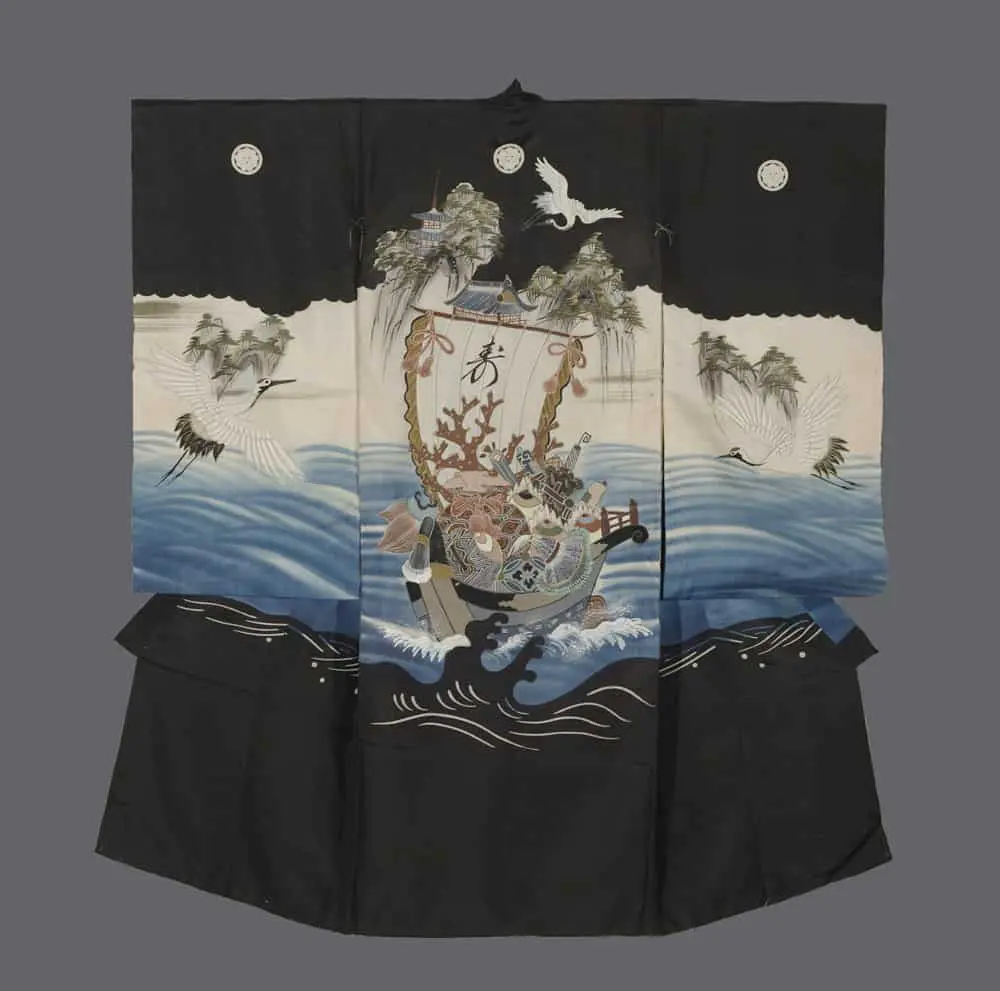This silk miyamairi kimono's primary motif centers on a treasure ship (takarabune), a deeply auspicious symbol in Japanese culture representing good fortune, prosperity, and divine blessings—particularly fitting for a ceremonial garment intended for a Shinto shrine blessing of a young boy. The ship is rendered in rich detail through yuzen-dyeing and freehand painting, showing intricate cargo and passengers amid stylized waves that demonstrate the classical Japanese artistic approach to depicting water through flowing, rhythmic patterns.
The composition employs a dramatic contrast between the deep black upper portion of the kimono and the lighter lower section, creating a striking visual hierarchy that draws attention to the central maritime scene. White cranes soar through the composition, serving as additional symbols of longevity and good fortune, while pine trees frame the scene—another classical motif representing steadfastness and eternal life. The artistic execution shows influences from traditional Japanese screen painting and woodblock print traditions, particularly in the stylized treatment of natural elements and the careful balance of positive and negative space.
Measuring 33 inches (84 cm) from sleeve-end to sleeve-end and standing at 37 inches (94 cm) in height.
.avif)















